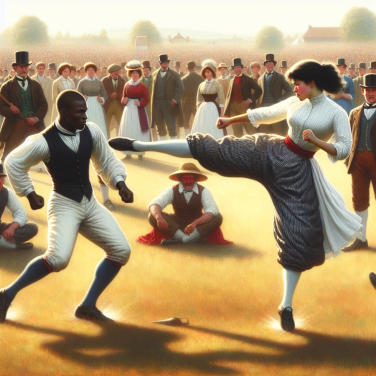Tracing the Roots: The Early Beginnings of Soccer
The origins of soccer, or football as it is known internationally, can be traced back over two thousand years. This globally beloved sport has evolved over the centuries to become a cultural phenomenon with die-hard fans around the world.
Reports suggest that the earliest forms of soccer dates back to as early as 200BC when a game called 'Tsu 'Chu' was played in ancient China. The game involved leather balls filled with fur and hair and was played as part of the emperor's birthday celebrations. In a parallel timeline, the Greeks and Romans played their versions of football games. These games, Episkyros and Harpastum respectively, were considered more violent and less structured.
Football continued to pick up momentum in medieval Europe, especially in England. Here, towns and villages would compete in games that could last for several days. While these games could be extraordinarily violent, they did contribute to the development of soccer as we know it today. However, it was not until the 19th century that the game began to resemble today's modern football.
In the 1800s, English schools began playing a variety of football known as 'mob football'. Different schools had their own rules, and this presented challenges in inter-school competitions. Recognizing the need to streamline the rules, in 1863, the newly established Football Association in England released a standardized set of laws for the game. This historic event is considered the birth of modern soccer, with the term 'association football' coined to distinguish this new standardized game from its more violent, unruly medieval counterparts.
The first known soccer club, Sheffield Football Club, was founded in 1857, followed by England's first football competition, the Youdan Cup, in 1867. By the late 1870s, soccer had also taken off internationally, particularly on the continental European stage and in South America. The introduction of the International Football Association Board in 1886 further standardized global game rules, which would eventually become recognized as the international governing body for soccer, FIFA.
Soccer's first international match took place in 1872 between Scotland and England. As the sport continued to become more structured and organized, the 1900 and 1904 Summer Olympics saw soccer as a demonstration sport. This set the stage for the first-ever FIFA World Cup, which took place in Uruguay in 1930.
Read also:
The Adrenaline-Fueled World of Rally Racing: A Comprehensive Guide"
The Evolutionary Journey: How Soccer Has Transformed Over The Years
Soccer, often celebrated as 'the beautiful game', has a long and fascinating history, dating back over two thousand years. The sport we now know as soccer started to take shape in the mid-nineteenth century, but its roots can be traced back much further, to the sprawling civilizations of ancient times.
Ancient civilizations across China, Greece, Rome, and Central America all played ball games that could be considered early forms of soccer. In China, a game known as Cuju, which translates as 'kick ball', was popular as far back as the Han Dynasty (206 BC – 220 AD). Similarly, the Greeks and Romans were known to play a game called Harpastum, which also involved kicking a ball. However, these ancient games were structured quite differently from modern soccer and were often more violent.
The Golden Age of Soccer in the 19th century saw significant transformation in the game's organization and rules. In 1863, the London Football Association was formed and set out rules, which excluded any handling of the ball. This was a significant divergence from Rugby Football and led to the birth of the sport we know today as soccer. The first official soccer match was played on 19th December 1863, between Barnes Football Club and Richmond.
By the turn of the 20th century, soccer had spread globally, due in large part to the British Empire’s influence around the world. International fixtures began taking place, with the first ever official international soccer match recorded in 1872 between Scotland and England. FIFA (Fédération Internationale de Football Association) was subsequently founded in 1904, laying the foundations for the global structure of soccer we know today.
Technology and strategy have likewise deeply influenced soccer over the years. For instance, until the 1950s, soccer balls were made of heavy leather, which absorbed plenty of moisture and became even heavier during wet games. The transition to synthetic materials in the 1960s made the ball lighter and the game faster.
Strategically, up until the 1920s and '30s, soccer was primarily a dribbling game, with little in the way of passing strategy. However, as training techniques and understanding of the game's mechanics evolved, so did the way the game was played. The introduction of formations, such as the now-popular 4-4-2, radically transformed on-field strategy and led to a more complex, tactical game.




